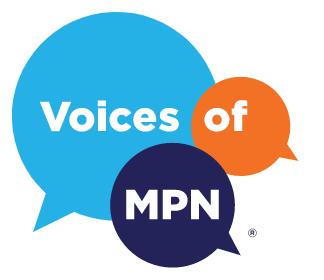


What Is ET?
Essential thrombocythemia (ET) is a rare, chronic blood cancer in which a person’s bone marrow makes too many blood platelets (also known as thrombocytes). About half of people with ET have a mutation—or change—in a certain gene in the body.
Platelets travel through the body’s blood vessels. When a person damages a blood vessel—through a cut, for instance—platelets stick together to form clots and stop the bleeding. In people with ET, the bone marrow makes too many platelets, making it hard for the blood to flow. Unnecessary clots may form, and/or bleeding may increase.
Clotting can lead to serious health problems, like heart attack or stroke.

I had been living with a myeloproliferative neoplasm (MPN) called essential thrombocythemia (ET)…I suspected that my condition was changing... —Marilyn, MPN patient
How Common Is ET?
Approximately 71,000 to 88,000 people in the United States have ET. ET is most common in adults older than 50 years of age. It is more common in women than men.


How Is This Condition Managed?
Management of ET depends on many factors. Healthcare Professionals consider patients’ risk of blood clots or bleeding, age, and other cardiovascular risks. Management strategies may include regular checkups, medication to reduce platelet counts, or a procedure to lower platelet counts.
What Is the Prognosis?
Each individual journey with ET is unique, and how it may progress or transform over time can vary from person to person. In many cases, people can live with this condition for a long time. However, careful medical supervision can help prevent or treat any possible complications, specifically those related to blood clots (thrombosis).
The median survival for people with this condition is near normal. However, in some cases ET can transform into another MPN.
Your specific medical situation should be evaluated by your Healthcare Professional, who is the best source of information about life expectancy with ET.
Speak Up—and Spell Out How Your ET Makes You Feel
When you’re living with ET, you may find yourself saying that you’re fine—even when you might not be. But when you don’t speak up and share how you really feel, you may miss out on the opportunity to get the care and support that you need and deserve.
Remember, changes in your ET symptoms could be a sign that your ET is changing, too. So be sure to spell out how you really feel. Because fine is not enough.
View helpful ET resources to help you take an active role in your care.
Receive Updates on Essential Thrombocythemia
Sign up today to receive an ET awareness bracelet and educational resources.
View Key Facts About Essential Thrombocythemia (ET)
Get information to empower your journey with ET



